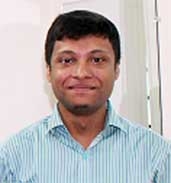
Md. Arafat Rahman :
The World AIDS Day is celebrated as an international day on 1st December every year since 1986. The day has been chosen to raise awareness against the spread of the AIDS epidemic for HIV infection and to remember those who have died from the disease. The day is being observed by government, health officials, non-governmental organizations and individuals around the world to raise awareness about AIDS prevention and control.
AIDS is currently considered an epidemic that exists across a large area of the world and is actively spreading. The HIV virus was probably originated in West-Central Africa in the late 19th century or early 20th century. The disease was first identified by the US Centers for Disease Control and Prevention (CDC) in 1981. According to the CDC’s 2017 survey, seventy percent of the victims of HIV in the United States are gay and bisexual men.
If blood is taken from a person infected with the HIV virus, or by using an injection syringe or needle, the baby of a pregnant mother infected with the HIV virus is also more likely to be infected, either late in pregnancy or during delivery. Having unprotected sex (without using a condom) with someone infected with the virus can lead to AIDS. HIV does not live long outside the body. For this reason, the risk of HIV infection is very low if blood or sexual discharge does not enter the body directly. Just touching, eating together, even wearing the same clothes or mosquito bites never spread HIV. So HIV infection is not contagious.
AIDS was first identified in Bangladesh in 1989. The number of AIDS patients in Bangladesh is still not very high — 0.1 percent of the total population. However, the number of new patients is increasing. The spread of HIV is increasing among sex workers and drug addicts through injections. However, in the last five years, HIV infection among housewives and pregnant women has also increased. A survey of 4,000 people engaged in hazardous work found that Bangladesh is on the brink of an AIDS epidemic. The study, conducted by the ICDDR, B and National AIDS Prevention and Control Program found that at least two out of every 100 drug users in Bangladesh are carriers of the HIV virus that causes AIDS. Also, at least one in every 100 sex workers has HIV. The situation is deteriorating due to lack of guidance on how to build immunity against HIV.
AIDS patients are spreading in all districts of Bangladesh. However, the scope of surveillance in this regard is limited in the districts of Chittagong Hill Tracts. Millions of Bangladeshi workers have migrated to the Middle East and Europe, where they are mainly engaged in manual labor. Studies have shown that migrant workers are more likely to be infected with HIV and it is on the rise. It is feared that the spread of AIDS in Bangladesh will be rapid like in African countries, if the trend is not stopped with timely and proper prevention measures.
No cure for AIDS has yet been found. Researchers have so far discovered many drugs. The first type of drug is called nucleoside reverse transcriptase inhibitors, which delay the transmission of the HIV virus. The second type of drug is called protease inhibitor, which inhibits the reproduction of HIV virus. Since only one class of medicine is effective in the body alone, integrated medicine is given. This practice is called HAART or Highly Active Antiretroviral Therapy. Although it does not cure AIDS but it does play a key role in reducing the number of deaths.
It is possible to prevent AIDS by creating awareness about the ways to transmit HIV. The measures that can be taken to prevent AIDS are: 1) to check if there is HIV in the blood before blood transfusion or organ transplant, 2) to use new needle / syringe every time for injection, 3) to refrain from unprotected sex, 4) to consult a doctor in case of adoption or breastfeeding of a mother infected with HIV / AIDS, 5) not using blades used by others and 6) mainataning religious and social values.
(The Writer is Asst. Officer, Career & Professional Development Services Department, Southeast University).

